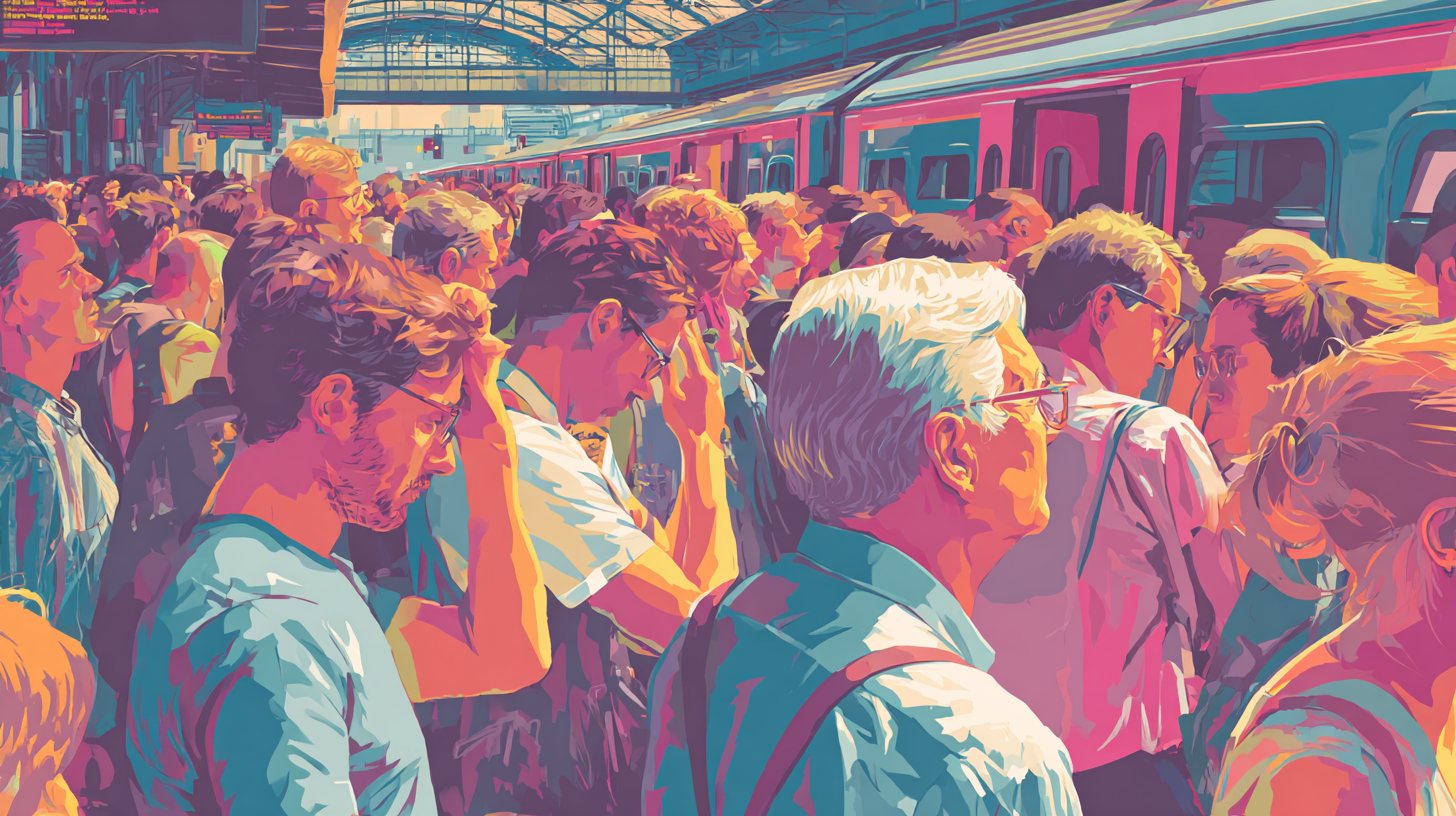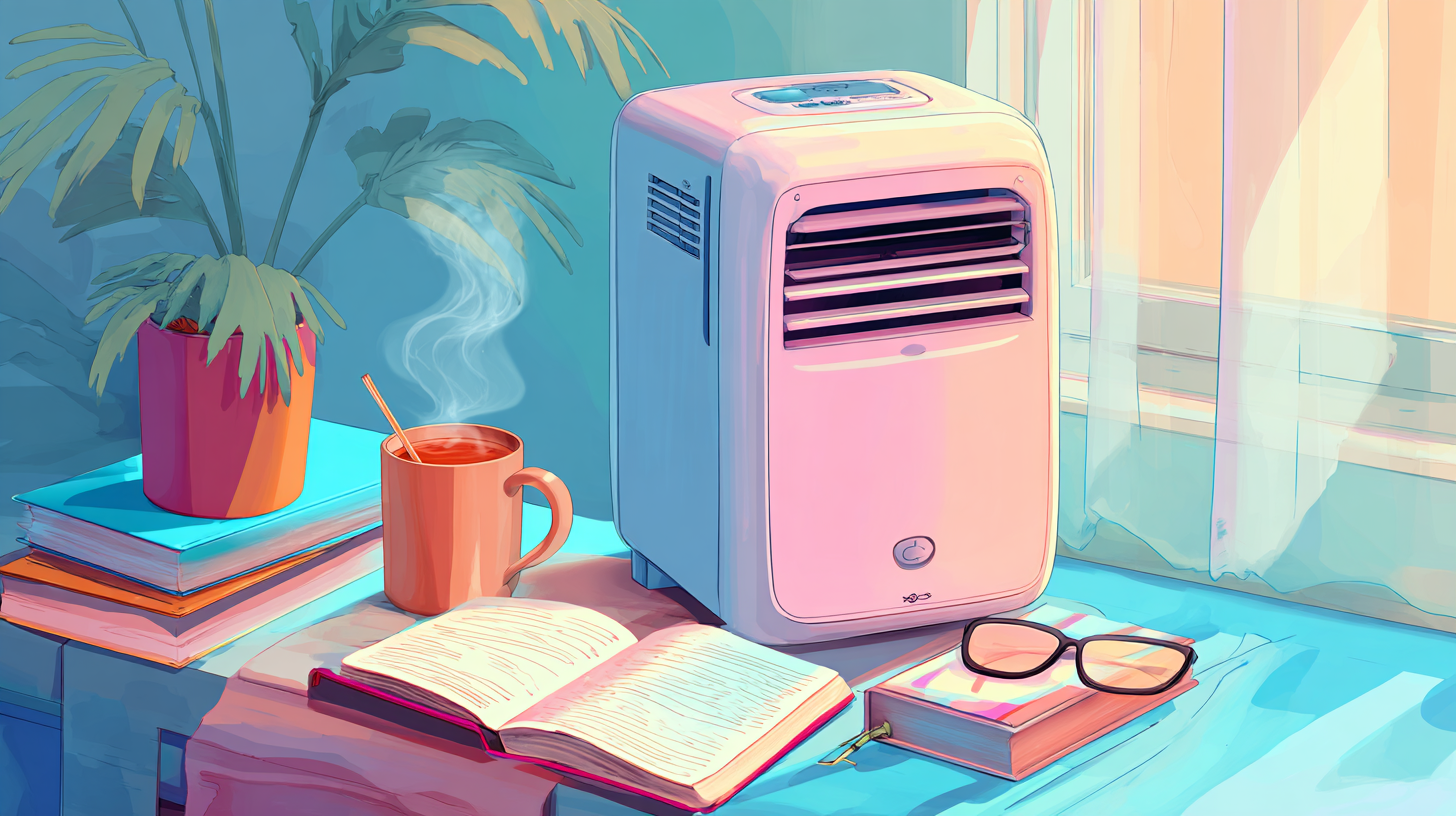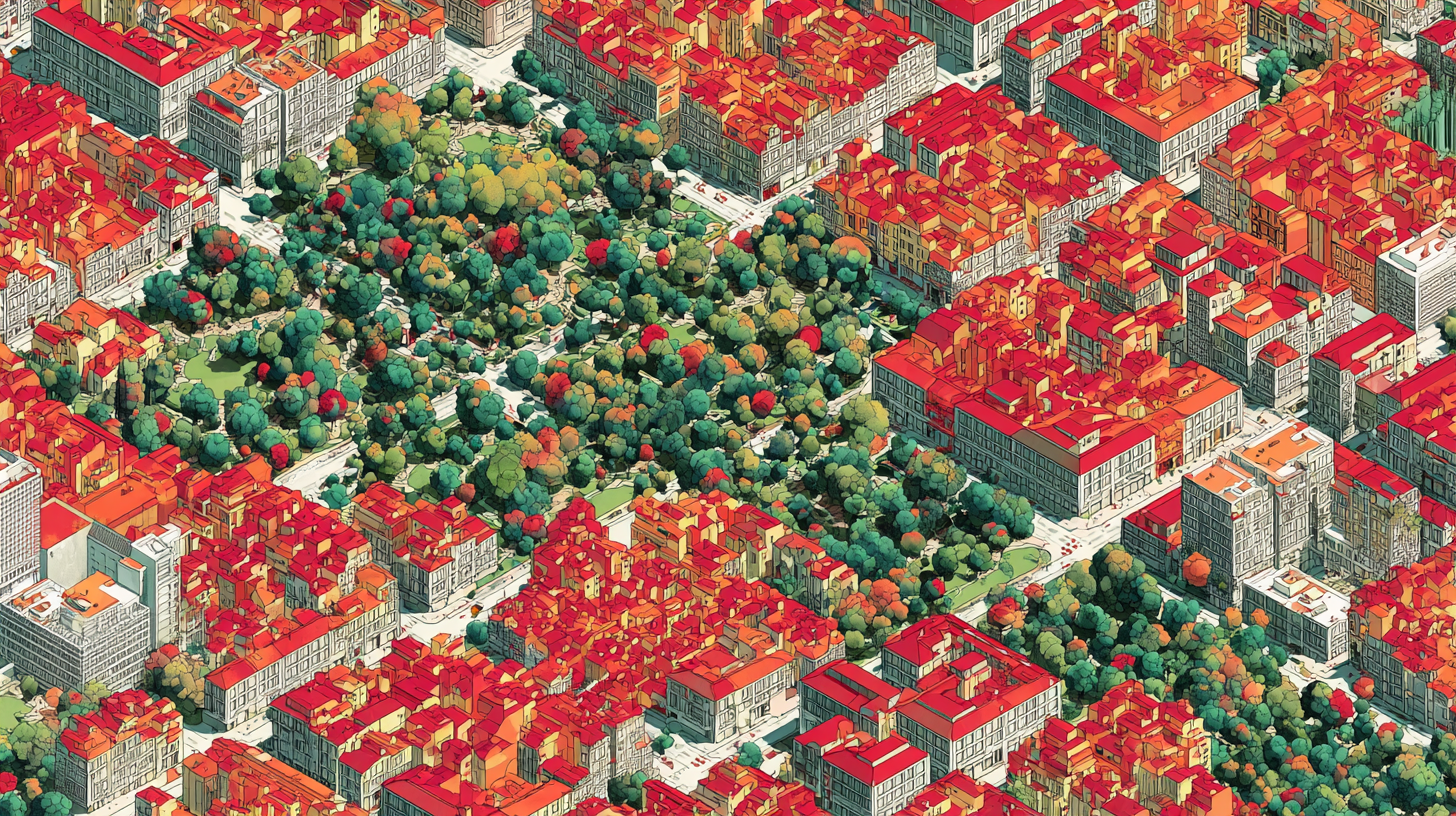Is the Sun Making Us Mad? How Extreme Heat Hijacks Mood, Fuels "Heat Rage," And What You Can Do About It 🥵
Summertime SAD and "heat rage" is here. Learn how extreme urban heat rewires our mood-with symptoms, science, practical fixes, and why AC is mental‑health tech. Backed by experts, climate research, and TikTok's emotional pulse.

Ah, summer. The season of long days, warm nights - and an inexplicable, simmering fury. Summers, for a growing number of people, have changed. What was once the time of year for R&R, summer is becoming a time of irritability, anxiety, restless nights, mood swings. Say hello to summertime SAD: the warm‑weather cousin of winter depression.
Summertime SAD, or heat rage, happens when prolonged heat disrupts our circadian rhythms, scrambles serotonin and melatonin levels, and strips away restorative sleep. Oh Matt, this is just summer in countries that don’t have air conditioning. Stop making a mountain out of a molehill. But those molehills? They’re getting bigger.
"During heat waves, we see an increase of suicides, substance use, domestic violence and emergency room visits due to mental health issues," says Dr. Susan Albers, psychologist at Cleveland Clinic. Research backs her up: hotter days are linked to spikes in psychiatric emergencies, with one large study finding a 7% increase in suicide rates for every 1 °C rise above average monthly temperatures.
This is climate change in the nervous system. Not just a graph of rising CO₂, but cortisol spiking in your bloodstream, serotonin regulation faltering in your brain, and your patience burning off faster than your sunscreen. And as record‑breaking heatwaves become the new normal, what we're experiencing isn't a seasonal inconvenience. It’s a psychological public‑health warning delivered in daily weather reports.
That’s why this week I’m exploring how heat rage and summertime SAD came to be. From TikTok confessionals to ER triage rooms, I’m examining the neuroscience of thermal stress, and asking an uncomfortable question: when the air itself starts changing how we think and feel, how do we protect our minds as fiercely as we protect our bodies?
Want the podcast version? Right here. 🎤👀

The Diagnosis You Didn't Know You Could Get 🤒

We train our minds to expect seasonal depression in grey winters. But there's a less-talked-about, yet real, flip side to winter blues. Summertime Seasonal Affective Disorder is triggered not by dwindling daylight but by a heatwave boiling in the bloodstream.
Symptoms include:
- Simmering irritability
- Insomnia from stifling nights
- Anxiety
- Appetite loss
- A low-grade restlessness that silicone cannot soothe.
It's real-and emerging across the UK as summers intensify. But heat isn't just weather. It disrupts our circadian rhythms, muddles serotonin and melatonin production, and frays sleep cycle. Dehydration creeps in, which worsens cognitive focus and emotional control, turning city heat into a mood hazard.
This isn't whining over a warm evening. It's clinical. According to evidence submitted to UK Parliament, "heatwaves can expose pre‑existing psychological vulnerabilities, triggering a first episode of major depressive disorder in previously healthy individuals".
Meanwhile, NHS and King's College research shows that people with mental health conditions are twice as likely to suffer ill health during heatwaves, and those taking common psychotropic medications face heightened thermo-regulation risk.
One UK study found that for every 1°C rise in mean temperature above 18°C, suicide rates increased by around 3.8%, while emergency presentations for mood disorders and substance misuse surged.
Back in 2022, record-breaking UK heatwaves caused nearly 3,000 excess deaths, disproportionately among the elderly-but mental health strain reached across age groups, creating an invisible epidemic of distress.
But what makes the dissonance sharper here in Britain: we're culturally conditioned to "make do and mend," to grin and bear a bit of sunshine. Yet our housing stock, mostly built to trap heat in winter, now becomes ovens in July. Only about 21% of UK homes have air conditioning-and many vulnerable households lack the means to cope.
So the next time you're snapping at a partner or staring at your ceiling at 3 am, wondering what's wrong-maybe the culprit isn't emotional burnout. Maybe it's the thermometer. You're not just hot; you're being remade by heat.
"Heat Rage" - From TikTok Meme to Clinical Concern 📲

On TikTok, hashtags like #heatrage and #climateanxiety have become a confessional booth for a world overheated - the background hum of frustration surfacing in pixelated bursts. One creator films themselves melting on a commuter tube. Another admits, "I cry more easily, I shout more often." These aren't performances; they're snapshots of life under thermal duress.
But beyond the memes, heat is the amplifier. In Britain and beyond, every extra degree above 18 °C correlates with significant increases in hospital visits for mood disorders, anxiety, panic attacks and even substance misuse.
And the mental health system is hearing it. Psychiatric helplines across Europe report spikes in calls on 25 °C+ days - up 3-5% compared with temperate days, while the Royal College of Psychiatrists warns that heatwaves raise psychiatric admissions by roughly 8%, and suicide risk by up to 1.5% per deg C above threshold.
The digital and clinical worlds overlap: people sharing their inner tempests on TikTok mirror the data from A&E logs. It's a feedback loop: venting validates, normalises, and even teaches a new language of distress. Emotional outburst becomes a signal-not just of personal stress, but of environmental breakdown.
At the same time, British climate policy is waking up. A 2024 Environmental Audit Committee report warned that mental health crisis risk doubles when temperatures rise from 22 °C to 32 °C. The link between social media rejection of "it's all just hormones" and the real statistical upticks in heat-related distress can no longer be ignored.
What began as TikTok venting has become a clinical concern. And as the world’s summer thermometers keep climbing, the emoji-fueled saturation in London's scrubbed tube cars is now rooted in the neuroscience of thermal stress-and a public health issue we cannot scroll past.
Climate Change Is in Your Nervous System Now 🧬

On the hottest July 2022 afternoons, the UK air felt radioactive-not just because it scorched the skin, but because it invaded our bodies. These weren't anomalies; they were systemic temperature shocks. That summer shattered records, with heatwaves pushing the mercury past 40 °C and nearly 3,000 excess deaths across England. But beyond mortality, a silent crisis stirred within the psyche.
Today, clear evidence links extreme heat to rises in psychiatric disorders, suicide, and emergency mental health admissions. A landmark review by Imperial College London and The Lancet Planetary Health found ambient temperature spikes - and erratic weather - correspond with declines in mood, rising anxiety, and increased hospital visits.
This isn’t climate change in the abstract. This is global warming embodied in our very being. Heat becomes cortisol. Heat muffles serotonin. Sleep on a "tropical night" brings fragmented REM, elevated stress, and a brain struggling to cope.
It's no longer enough to think of climate change in terms of seasonal allergies or infrastructure. The thermometer now pulses through our collective nervous system. Each heatwave is a public-health threat; each spike in temperature, a jolt to our emotional balance.
AC as Mental‑Health Tech 💨

In Britain, "air conditioning" used to be something you associated with Florida hotels or the back seat of a minicab. Now, it's creeping into living rooms-not as a luxury, but as mental‑health kit.
The science is blunt: cooler environments blunt cortisol surges, stabilise serotonin regulation, and improve sleep quality. The Royal College of Psychiatrists explicitly names cooling: whether through AC, fans, or shaded communal spaces-as a protective factor during heatwaves.
Yet cooling is stratified. Around 3% of UK homes have air conditioning (ONS Housing Survey), compared with 90% in the US. Access isn't just a postcode lottery - it's an income and class divide. In cities, wealthier residents can afford portable AC units or newly retrofitted flats with climate‑control; the rest rely on open windows, fans, or nothing at all.
This inequality is more than physical discomfort. Public Health England warns that socially deprived and ethnically minoritised communities are disproportionately exposed to "urban heat islands"-dense areas where temperatures can be up to 7°C hotter than the rest of the city. Without access to cooling, the mental‑health burden: irritability, anxiety spikes, depressive episodes-lands heavier in the areas where resources are at their thinnest.
Some urban planners are reframing cooling as infrastructure, not a consumer good. Proposals range from retrofitting council housing with climate‑adaptive ventilation to expanding cooling centres-public buildings kept under 25°C where residents can escape during heatwaves. Others call for tree‑planting and reflective pavements to bring down neighbourhood temperatures naturally.
In this light, air con isn't just about comfort, it has become psychological first aid. It's the difference between coping and spiralling. And as summers grow longer and hotter, cooling access may become as critical to public health as clean water or safe housing.
Why Heat Hits the Brain Hard 🫠

If you've ever snapped at someone for walking too slowly on a sweltering day, you've already felt it: heat doesn't just live on the skin, it rewires the brain.
When body temperature rises, the hypothalamus-the brain's thermostat-kicks into crisis mode. Blood is redirected from the brain's frontal cortex (the bit responsible for decision‑making and emotional regulation) towards the skin to help cool you down. The result? Duller cognition, shorter tempers.
Neurochemistry takes a hit too. Heat stress has been shown to reduce serotonin production and disrupt the delicate balance of melatonin. Making it harder to sleep and recover overnight, which in turn, compounds over successive hot nights, creating a feedback loop: poor sleep increases irritability, anxiety and depression risk, which in turn makes it harder to regulate emotions in the heat.
Then there's dehydration. Even mild dehydration-losing as little as 1-2% of body water impairs short‑term memory, attention, and mood. On hot days, we lose more fluid through sweat, and unless replenished, the brain quite literally runs on less.
In extreme cases, heat can overload the nervous system entirely. Researchers have linked higher ambient temperatures to spikes in aggressive behaviour and violent crime rates (Nature Human Behaviour), and hospital data confirms that psychiatric crises-from panic attacks to psychosis-are more likely during heatwaves.
What's insidious is how early the brain starts waving the red flag. Irritability, restlessness, difficulty concentrating. These aren't just bad moods, they're warning lights on the dashboard of a system under strain. Ignore them, and the crash comes fast.
The Psychological Shift - Falling out of love with sunshine 💔

For most of us who grew up in cooler climates, summer was the prize. It meant beer gardens, music festivals, briny afternoons by the coast. It meant lightness: in clothes, in mood, in the air itself.
But the summers we were promised and the summers we are now living through are no longer the same thing. When heatwaves were rare, they were an excuse for joy. Now, they're closer to a warning siren. By the fifth consecutive day of 30°C, the romance burns off. Nights get restless. Tempers shorten. People retreat indoors, blinds drawn, fans roaring.
This isn't just a meteorological shift-it's an emotional one. Psychologists talk about ecological grief: the mourning that comes when beloved seasons or landscapes change beyond recognition. On top of the short tempers and loss of control, we're also living through a quiet identity crisis-our cultural scripts for summer are being rewritten, and we're not keeping up.
And the dissonance runs deep. Advertisers still trade on the "endless summer" fantasy: BBQs, open‑air cinema, beach bodies, but the lived experience increasingly feels like survival mode. That gap between what we're sold and what we endure can seed resentment, even depression. Researchers note that when climate change shifts the baseline of a season, people's relationship to that season changes too. Affection curdles into avoidance.
There's also the nostalgia effect. Older generations recall the "perfect" summer: a selective memory painted in golden evenings and the smell of cut grass. But this selective recall can make present‑day heatwaves feel like a theft, deepening the sense of loss. It's not just hotter summers we're adjusting to, it's the emotional weight of knowing they'll never go back to how they were.
We are, in real time, falling out of love with summer. And that rupture has consequences, not just for our mood, but for how we organise our social lives, plan our cities, and imagine our futures. Is there anything we can do about it? I believe so.
Keeping Your Cool - Practical Strategies 🥶

Now that I’ve made you hate summer, there are ways around it. Heat rage thrives when we feel powerless against the temperature. But there's a surprising amount you can do to shield both body and mind-short of emigrating to somewhere with permanent cloud cover.
- Cool your core, not just your skin. Cold showers, ice packs on pulse points (wrists, neck, ankles), and even rinsing your feet in cold water can lower core body temperature faster than sitting in front of a fan.
- Hydration as a daily discipline.We often wait until we're thirsty - by which point cognitive performance is already sliding. Aim for steady intake throughout the day, and remember: caffeine and alcohol accelerate dehydration. I know I know. That’s another thing we’ve lost to heat rage.
- Sleep like a Victorian. If AC isn't an option, borrow tricks from before climate‑controlled nights: open windows at opposite ends of the house to create cross‑ventilation, use light cotton sheets, and keep a damp cloth nearby to cool your skin before bed.
- Rethink your day's architecture. In southern Europe, siestas aren't laziness-they're heat management. If possible, shift demanding tasks to cooler hours (morning or late evening) and avoid direct sun between 11am and 3pm.
- Guard your nervous system. Heat lowers emotional bandwidth, so build in recovery time. Practising mindfulness, deep breathing, or even five minutes of quiet can buffer against heat‑induced irritability.
- Make it communal. Cooling centres, public libraries, shaded parks-these are not just places to drop body temperature, they're community lifelines. In cities like Manchester and London, councils have begun trialling more public cooling spaces during heatwaves.
In the same way we've learnt to carry umbrellas for rain, we may have to start treating cooling as an everyday part of urban life. Resilience in a hotter world will be as much about social adaptation as personal hacks.
Beyond Hydration: Building a Future That Can Withstand the Heat 🌅

Heat rage isn't a personal failing-it's a systemic signal. It tells us that climate change has moved from abstract graphs to the fabric of our daily lives, right down to the synapses that fire when someone cuts in front of us in a queue.
We've been taught to treat heatwaves like temporary inconveniences, something to outlast until the next patch of mild weather. But that story is obsolete. In the UK, Europe, America, anywhere where heat is not a constant, the Met Office confirms our summers are getting longer, hotter, and more intense. And the mental health toll will not be solved by hydration tips alone.
This is about infrastructure: shaded streets, cooling centres, homes designed to stay liveable in 35°C heat. It's about recognising extreme heat in the same category as flood warnings or smog alerts: a public health risk. It's about ensuring access to cooling isn't a privilege for those who can afford to crank up the AC.
The fight against climate change is often framed as a race to cut carbon. But it's also a fight to protect our collective mental equilibrium. That means advocating for climate‑adaptive mental health policies, funding for heat‑resilient urban planning, and public awareness campaigns that treat heat stress with the seriousness it deserves.
Because if we can name this thing-heat rage, summer SAD, ecological grief - we can also dismantle its hold. And maybe one day, standing outside in July won't feel like being interrogated by the sun.
Things we learned this week 🤓
- 👩⚕️ Celebrity obsession can be an early sign of narcissism.
- 🤯 Turns out women are far more competitive than men in single sex only environments.
- 😞 Men are more inclined to take sexism seriously when their partners talk about it.
- 🙉 Do you always feel like you're the victim? You may have Victim Justice Sensitivity.
Just a list of proper mental health services I always recommend 💡
Here is a list of excellent mental health services that are vetted and regulated that I share with the therapists I teach:
- 👨👨👦👦 Peer Support Groups - good relationships are one of the quickest ways to improve wellbeing. Rethink Mental Illness has a database of peer support groups across the UK.
- 📝 Samaritans Directory - the Samaritans, so often overlooked for the work they do, has a directory of organisations that specialise in different forms of distress. From abuse to sexual identity, this is a great place to start if you’re looking for specific forms of help.
- 💓 Hubofhope - A brilliant resource. Simply put in your postcode and it lists all the mental health services in your local area.
I love you all. 💋





